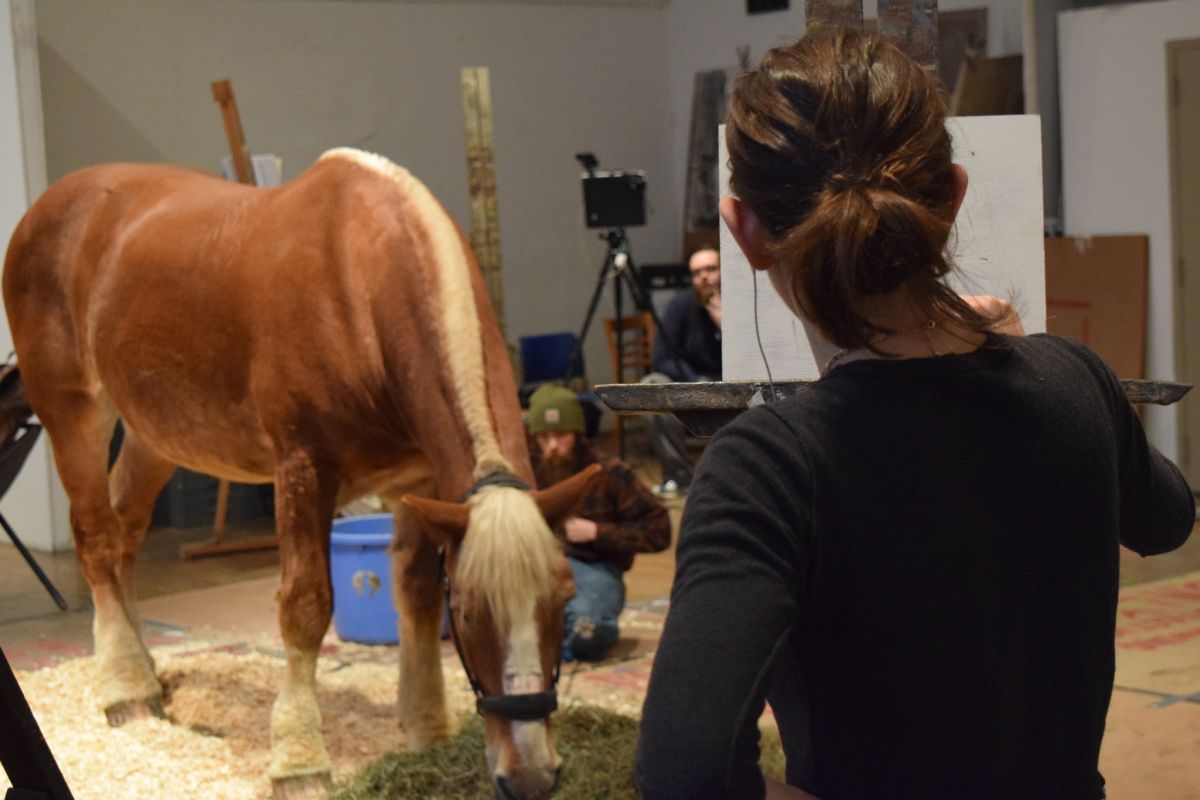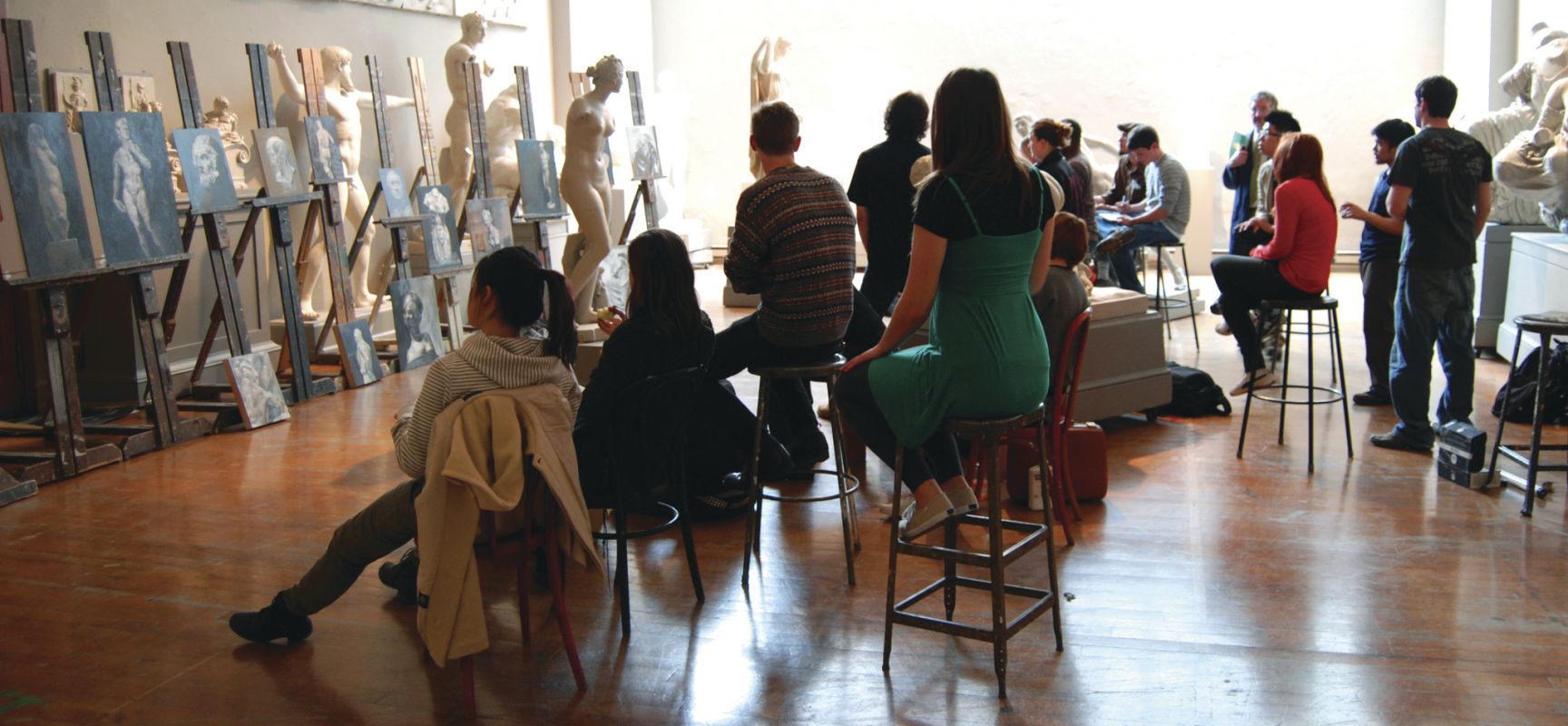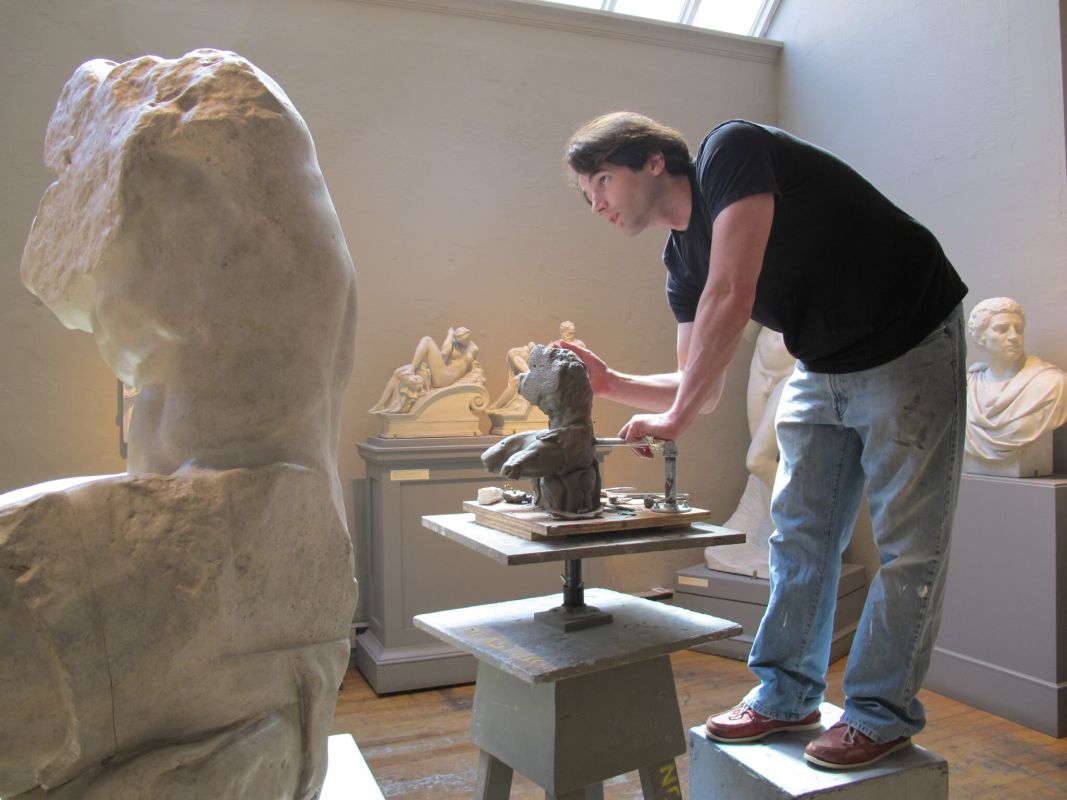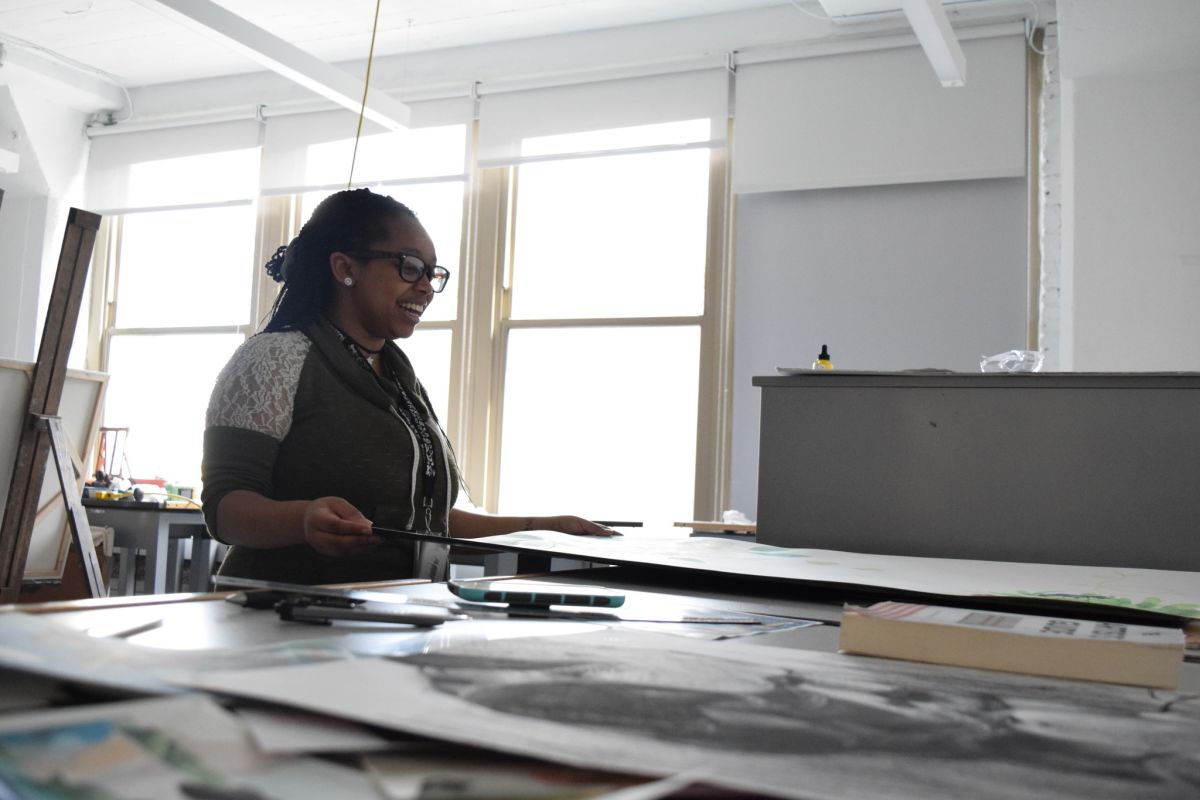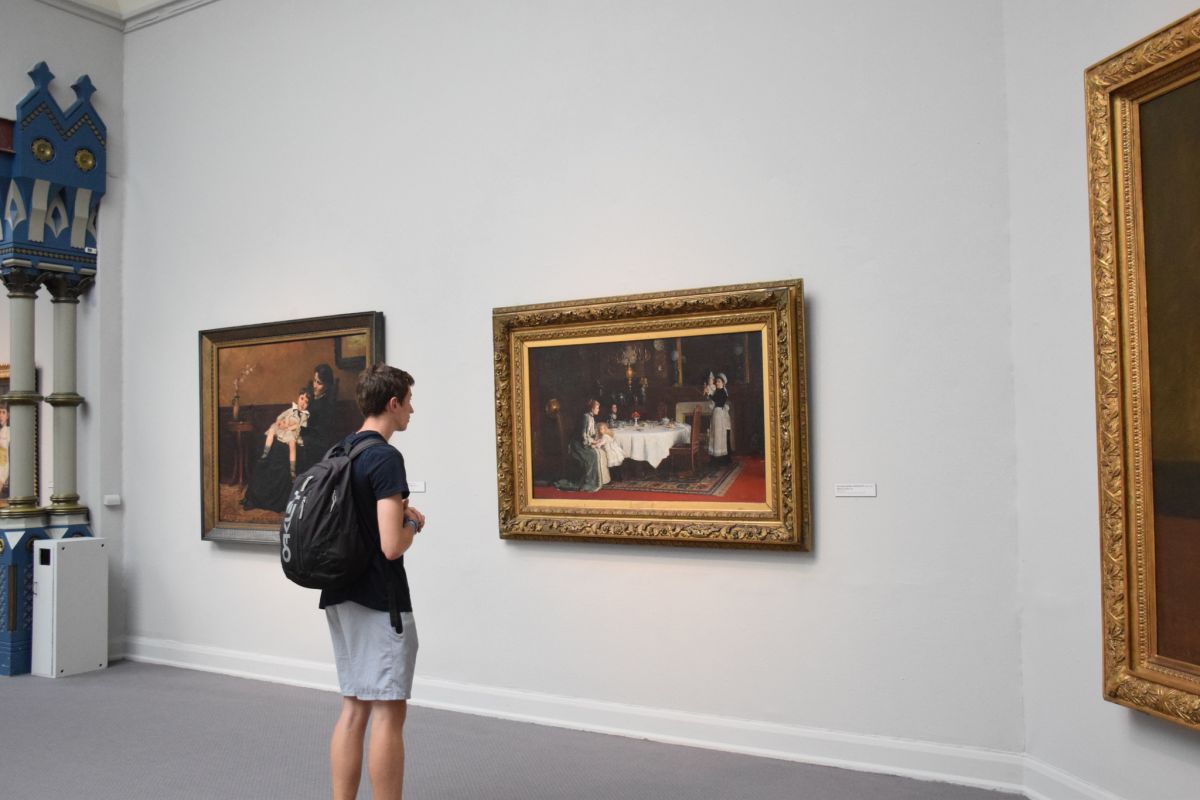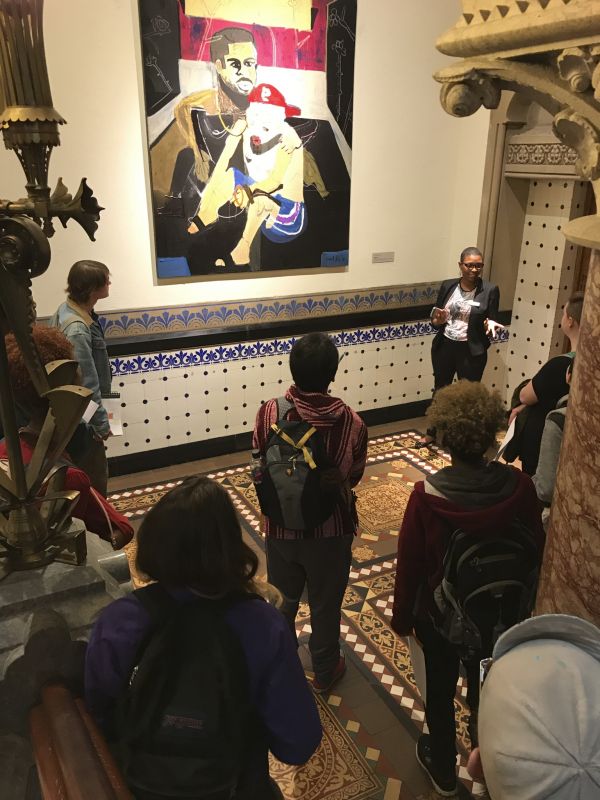First Year Foundation
PAFA’s first-year curriculum introduces students to key skills, concepts, and studio art disciplines that are critical to their growth as artists. Our teaching philosophy develops strong traditional fine art making skills, in combination with contemporary practices, to prepare students for innovation, experimentation, and finding their own personal voice. The first-year experience at PAFA provides students with an unparalleled foundation on which to build and explore.
Team-taught courses give students a solid grounding in drawing, painting, sculpture, printmaking, illustration and digital media. Direct observation and working from the figure play vital roles, and students learn anatomy and work from PAFA’s historic cast collection. The first-year program helps students achieve a high level of competency with materials and processes as they work in the sculpture and printmaking shops, and gain new media skills in the digital labs. The curriculum introduces students to the primary areas of study at PAFA and prepares them to focus in the direction of their choosing.
Studio work is complemented by rigorous liberal arts studies that help students understand key concepts and clearly articulate their ideas. In the first year, students take courses in art history and writing, as well as learn about museum studies and art historical methodologies. PAFA’s museum offers an extraordinary resource as students learn from the permanent collection and special exhibitions. Talks by visiting artists, curators and scholars help students gain a greater awareness of important historical and contemporary artists and ideas.
Fall Semester
Structure and Form I
This course focuses on the structure of images. It defines structure as a spatial relationship between all of the elements of an image and sees the structure as that which determines the implications and effect of an image. Structure and Form I combines drawing and still life painting. Students learn to manipulate space and create structure by observing and arranging value, color, and shape, as well as by mastering the skills of linear perspective.
The Figure I
The Figure I explores the structure and dynamics of the figure through drawing and sculpture. Working primarily from observation, students learn concepts of proportion, anatomy, gesture, mass, line, tone and spatial arrangement. Using a range of techniques & media, instruction includes traditional, contemporary and imaginative approaches to the human form. Studio work is complemented by presentations, lectures, demonstrations, and group discussions.
Print and Communication I
In Print and Communication I, students master conceptual frameworks, learn to interface between analog and digital work, and incorporate tactical skills in the realms of digital media and printmaking. Students select their own image content and explore subject matter and aesthetic approaches of their choosing. The mission of the course is to help students create the most visually arresting version of what they want to achieve.
Foundations Experience
Foundations Experience helps students connect the skills and concepts they are learning in their first-year courses with a broader context of art and ideas. Utilizing PAFA’s collections and numerous resources, students consider all aspects of their artistic practice and education. Working with faculty and museum and school staff, students learn a wide range of skills, from how to make the most of their PAFA experience and to develop a sustainable, creative life in the arts. The course includes visits to PAFA’s archives and collections, trips to nearby galleries and museums, visiting artist lectures, and in-depth discussions about the how, what, and why of art. As part of the course, students are required to attend Wednesday lunchtime lectures.
Art History: Visual Culture
This course will introduce students to visual culture: an interdisciplinary field of study that focuses on aspects of culture that are manifested in visual form. Combining aspects of art and media history, critical theory, philosophy, and anthropology, visual culture is concerned with the ways in which we negotiate and understand our world through visual images. This course will look at paintings, sculptures, prints, photographs, film, television, advertisements, news and science images, and more, in order to understand how the world itself is shaped by visual communication. Students in this course will cultivate skills in visual analysis and description, identify how ways of looking are socially constructed, critique the role of images in shaping political discourse, and assess ethical dilemmas posed by images. These skills will provide the basis for literary skills necessary in both the liberal arts and studio art curriculum.
Writing Composition I
This course focuses on writing, helping students develop the skills they need to write coherent essays at the collegiate level. A strong emphasis is placed on the importance of syntax and grammar, while at the same time encouraging students to develop their own individual voices. In particular, attention is paid to different forms of writing related to the arts. Through writing assignments, students not only develop their skills as a writer further but also learn how to craft a public voice as a writer. This involves a negotiation between their individuality and the expectations of audiences interested in the visual arts.
Spring Semester
Structure and Form II
Providing a continued exploration of structure and form, this course emphasizes three-dimensional relationships through the study of drawing and sculpture. Students learn to manipulate form and create structure by working in a variety of sculptural processes including modeling, construction, and carving as well as further mastering the skills of linear perspective.
The Figure II
Like Figure I, this course centers on the observational study of the human form. Focusing on painting and drawing, students build on concepts learned in Figure I. Studio work is supported by lectures and demonstrations on painting materials, color mixing, and strategies for developing form and structure. Understanding historical perspectives, as well as contemporary and imaginative approaches to the figure, are emphasized.
Print and Communication II
In this course, students continue to develop conceptual frameworks, build narratives, and learn to communicate via their work. Print and Communication II emphasizes visual communication through the study of relief printmaking and core illustration concepts. As in Print and Communication I, students explore subjects and aesthetic approaches of their choosing.
Foundations Experience
Foundations Experience helps students connect the skills and concepts they are learning in their first-year courses with a broader context of art and ideas. Utilizing PAFA’s collections and numerous resources, students consider all aspects of their artistic practice and education. Working with faculty and museum and school staff, students learn a wide range of skills, from how to make the most of their PAFA experience, to develop a sustainable, creative life in the arts. The course includes visits to PAFA’s archives and collections, trips to nearby galleries and museums, visiting artist lectures, and in-depth discussions about the how, what and why of art. As part of the course, students are required to attend Wednesday lunchtime lectures.
Art History: Deconstructing American Art
Since its founding in 1805, the Pennsylvania Academy of the Fine Arts has been a leading light in the development of an art tradition in the United States. Artists trained at PAFA have created some of the most important works in the American art canon, many of which are now enshrined in PAFA’s collection. But what sorts of stories does the canon of American art tell? What does it include, and what does it leave out? And how do historical portraits, landscapes, genre paintings, monuments and more contribute to our understanding of America as a nation? This course will explore the trajectory of American art in an effort to understand how images contribute to historical understanding, and when they become mythology. In examining where we have been and where we might go, we will consider how to tell a more inclusive story about American art.
Writing Composition II
In Composition II, students continue to be introduced to the skills expected of students writing at the college level. In this semester students gain the skills needed to write a research paper. This involves learning how to contour their informational skills to a particular subject, utilizing both traditional and contemporary research tools. Students learn how to read, organize, and cite research material. Particular attention is placed on the importance of authorship, how to properly footnote material being used in a research paper, and plagiarism. Students also learn how to outline and compose a research paper focusing on a subject of their choosing.
